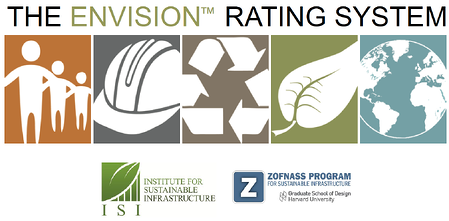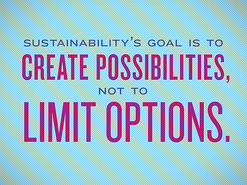The LEED certification program charted the path for infrastructure ratings systems in the U.S. As we’ve mentioned, however, LEED is hardly alone among programs that rate and reward green, sustainable building.

In 2010, ASCE, the American Society of Civil Engineers, introduced a sustainability rating system of its own — PRISM. The Project Rating for Infrastructure Sustainability and Management program was set to launch in May 2011. The difference between PRISM and LEED was that PRISM was concerned solely with infrastructures such as bridges, waterways and roads, while LEED covers livable building structures. PRISM’s goal was not only to evaluate current infrastructure projects, but also to influence and guide ones in the future.
As you can imagine, PRISM caught PermaTrak’s eye. Having a specialized system to rate sustainability for infrastructures such as our boardwalks is both vital and exciting for the future of green construction.
PRISM, however, has grown far beyond its original inception and implementation.
An Evolved Vision for Sustainable Building
In time, PRISM evolved into ISI Envision™. ISI, the Institute for Sustainable Infrastructure, is an independent non-profit organization co-founded by ASCE, the American Public Works Association (APWA), the American Council of Engineering Companies (ACEC). The Envision program developed out of several years of collaboration between these organizations, along with Harvard University’s Zofnass Program for Sustainable Infrastructure.
The ISI website says that “Envision™ provides a holistic framework for evaluating and rating the community, environmental, and economic benefits of all types and sizes of infrastructure projects. It evaluates, grades, and gives recognition to infrastructure projects that use transformational, collaborative approaches to assess the sustainability indicators over the course of the project's life cycle.”
Envision is a voluntary program that can be utilized by infrastructure owners, design teams, constructors, policy makers, community organizers, regulators and environmental organizations.
The program’s declared goals are to meet sustainability goals, recognize infrastructures (and the minds behind them) for high achievements in sustainable building, foster collaboration between communities and project teams and include community goals and needs in civil infrastructure projects. For ISI, sustainable building goes far beyond simply “going green” in construction.
How Envision Does It

Constructed in a similar manner to LEED, Envision has a list of criteria for sustainability ratings. There are 60 criteria (credits) for Envision, broken down into five different sections: Quality of Life, Leadership, Resource Allocation, Natural World and Climate and Risk.
Each section has a two-page detailed description. Because ISI provides Envision users with assessment tools (both the rating system and a checklist), they can be equipped for self-evaluation of their infrastructure projects if they prefer to take that route as opposed to using a third-party review by ISI Verifiers.
ISI also offers an Envision Sustainability Professional course that provides instruction on using their system as well as how to be recognized for achievement in sustainable building. There are four tiers to achievement, based on a minimum percentage of all applicable Envision credits: Bronze, Silver, Gold and Platinum Awards. There are also levels of achievement for individual credits, ranging from “Improved” to “Restorative.”
Right now, an economic optimization tool, construction and O+M phase credits along with other new criteria are in development to be added to the Envision sustainability rating system.
ISI’s Envision has its sights set not only on the green goals of environmental conservation and the restoration of natural resources and ecosystems, but also on the long-term resilience and performance of infrastructures to better and strengthen communities.
Look forward to more iterations of the Envision Sustainability Rating System in the future. New systems born from LEED’s trailblazing suited for more specific venues and projects only help bring about a more sustainable future. The more we learn about Envision, the more we recognize how the program is designed to keep pace with the ever-changing concept of sustainability.
Learn more about PermaTrak’s Ecological and LEED Benefits


